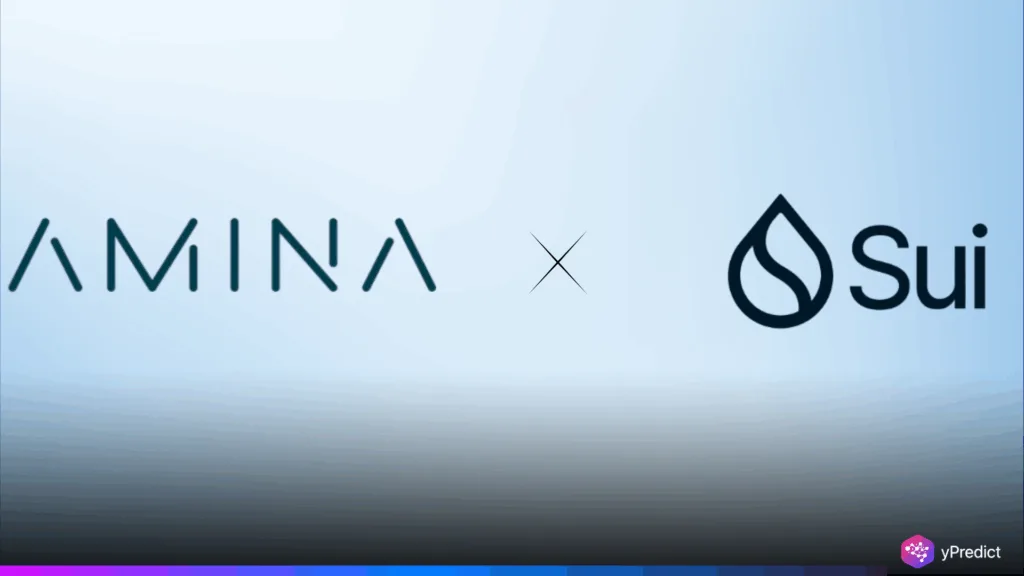
In a bold move toward AI-driven financial transformation, Switzerland’s AMINA Bank has become the first regulated financial institution to offer both trading and crypto custody for the SUI Token. The announcement marks a global first for a traditional bank and reflects a growing trend of institutional alignment with blockchain technology. Licensed by FINMA, AMINA Bank’s decision not only enhances crypto legitimacy but also emphasizes Switzerland’s supportive stance on digital assets.
The integration of the SUI Token, a high-speed Layer 1 blockchain, into traditional banking services comes as AI-driven strategies reshape how institutions approach asset management and custody. AMINA Bank’s decision signals how AI is beginning to dictate institutional crypto pathways, moving beyond hype into regulated financial ecosystems.
Swiss Regulation Accelerates AI-Led Blockchain Adoption
The involvement of FINMA-regulated AMINA Bank in SUI Token services showcases a rare mix of strong compliance and innovation. According to the 2024 Global Legal Insights report, Switzerland remains a global leader in progressive blockchain law, encouraging banks to responsibly adopt digital assets. The move is also AI-informed. Institutions are no longer making blind entries into crypto. Instead, machine learning and predictive analytics are driving decision-making.
AMINA’s selection of SUI, known for its scalability and performance, further reflects AI-model preferences for chains capable of handling institutional load. This isn’t just adoption—it’s calculated entry, supported by data-backed modeling. Such developments contradict earlier narratives. A 2022 BIS study had shown minimal bank-level crypto exposure, pegged at under $200 million globally. AMINA Bank’s participation alone now disrupts that narrative and hints at a rapid rise in AI-led financial diversification.
Crypto Custody Signals Shift in Institutional Confidence
The addition of crypto custody for SUI Token represents more than operational expansion. It signals growing institutional confidence in secure blockchain asset management. As AI systems vet risk, compliance, and volatility patterns, banks are increasingly relying on algorithmic due diligence to offer custody services. AMINA Bank’s exclusive offering to Swiss-licensed clients reflects caution but also underlines a clear demand.
AI tools have likely mapped localized market appetite, prompting the bank to start small, yet solid. This stepwise approach offers a model for other banks watching from regulatory sidelines. Importantly, custody isn’t a back-end feature anymore. It’s now central to client trust, and AI tools play a growing role in risk mitigation, fraud detection, and digital asset storage strategies. AMINA’s move cements that transition, positioning it as a regional crypto custody pioneer.
SUI Token Gains Credibility via AI-Vetted Traditional Finance
For the SUI Token, AMINA Bank’s involvement provides more than exposure—it gives institutional legitimacy. AI-driven models that track token performance, network health, and developer activity likely influenced the bank’s decision. SUI’s architecture, known for transaction speed and parallel processing, fits well with AI-led institutional requirements. This development may also ease lingering doubts about the SUI Token’s value proposition. Regulatory oversight, combined with bank-level infrastructure, introduces a level of stability previously missing from retail-driven crypto assets.
AI continues to play a crucial role here, evaluating security, performance, and governance across blockchain options before banks commit. By aligning with a regulated institution like AMINA, SUI effectively distances itself from speculative narratives and enters a new league of blockchain utility, now enhanced by data-driven bank strategies.
Localized Market Growth Driven by AI Signals Broader Trend
While AMINA Bank’s services are currently limited to Swiss clients, the move sets a precedent for localized crypto market expansion led by artificial intelligence. AI models, capable of tracking regional demand patterns, have likely indicated Switzerland as a strong pilot zone for SUI Token and crypto custody services. This rollout strategy shows how AI is shaping not just which tokens banks adopt, but where they roll out services.
As more financial institutions follow AMINA Bank’s blueprint, regional regulatory clarity combined with AI-driven forecasting could define the next wave of blockchain adoption. To summarize, AMINA Bank’s regulated participation in crypto custody and SUI Token trading and legalising crypto assets signified a watershed moment for AI-powered finance. As entrenched institutions pivot to digital assets, with AI guidance, the operational reality and legitimisation of crypto’s role in mainstream finance becomes stronger.






